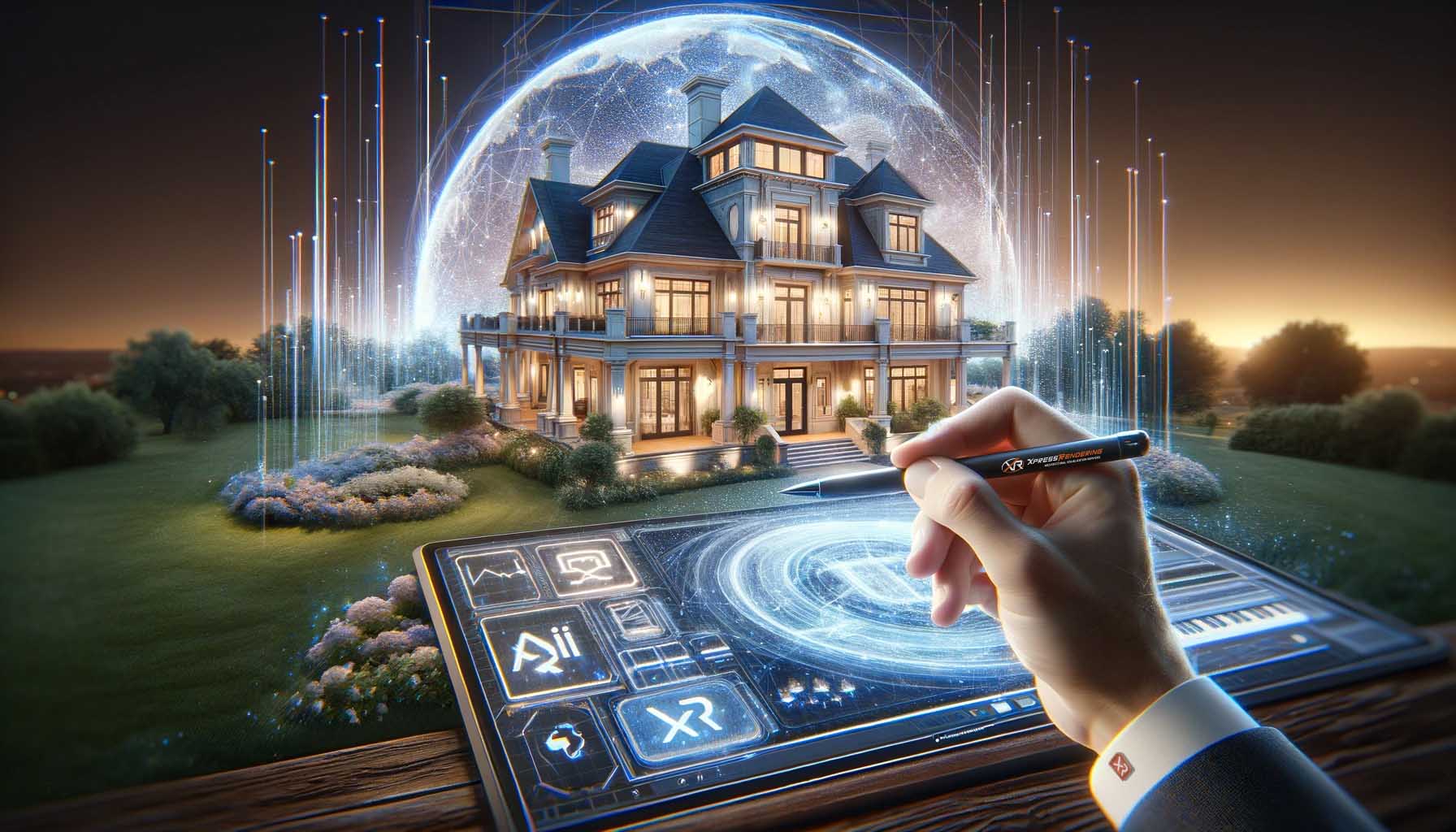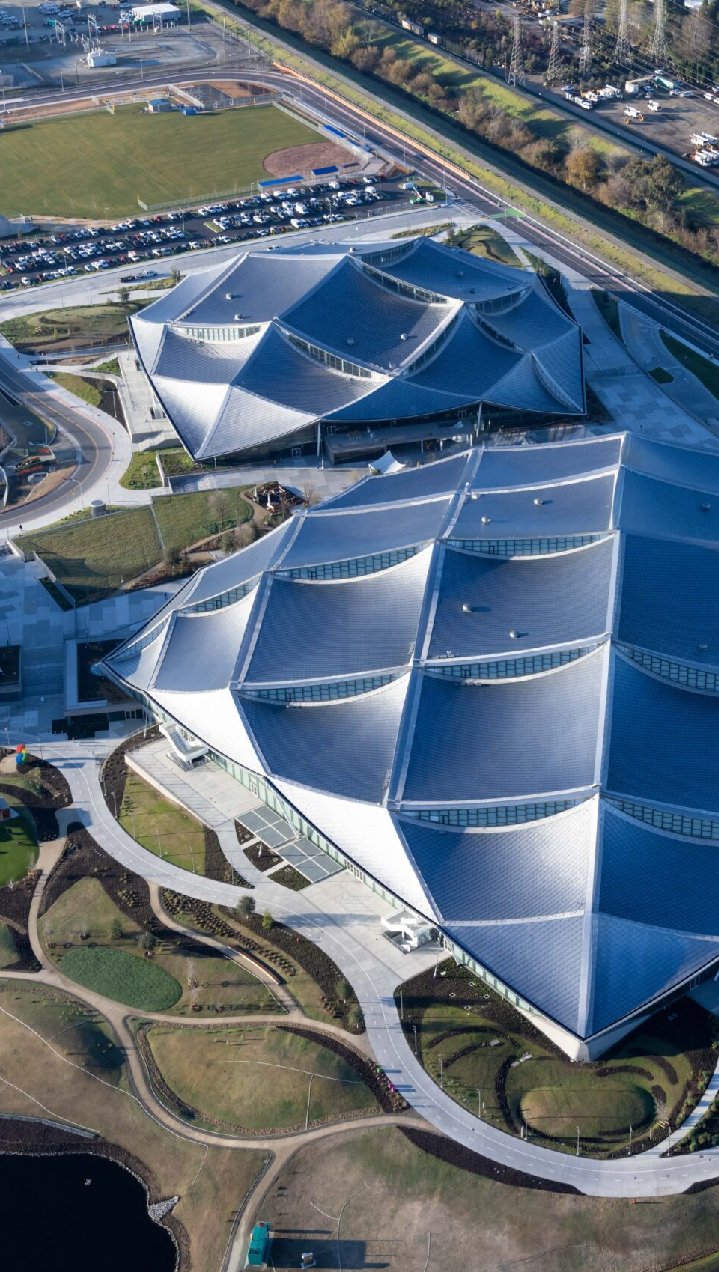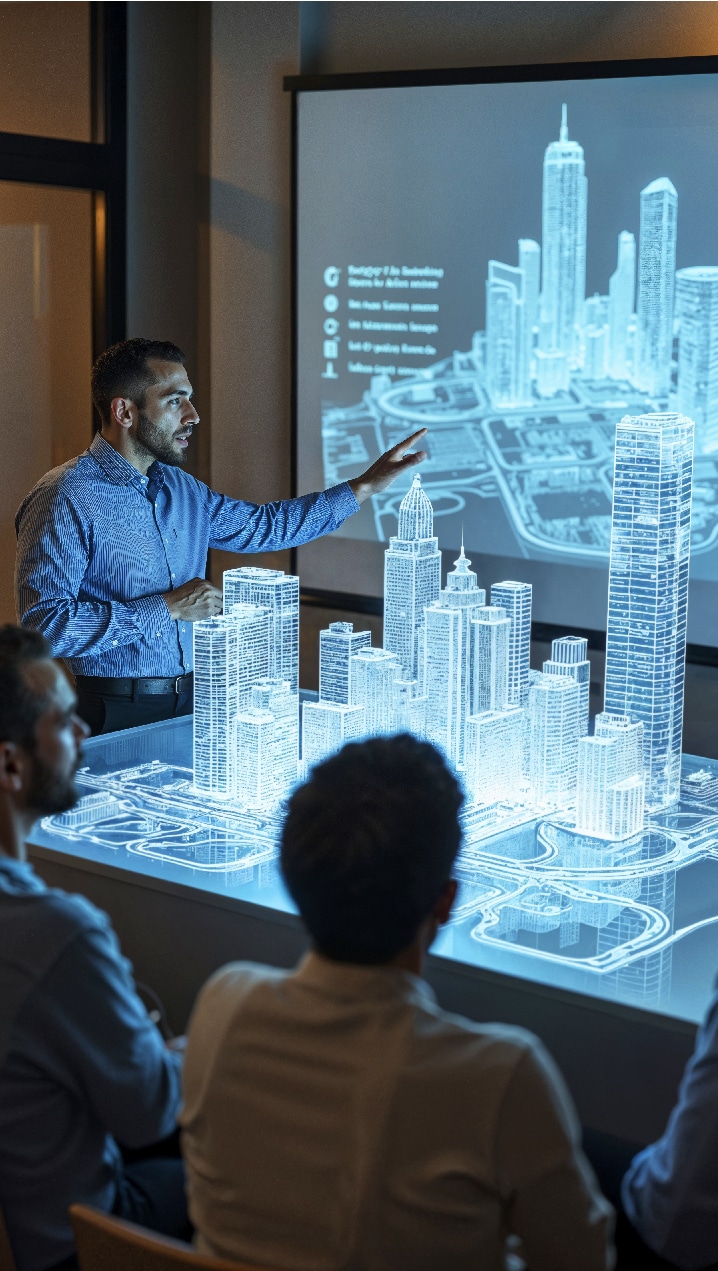The convergence of Artificial Intelligence in the 3D Rendering Industry has sparked a revolution in how we perceive and create three-dimensional images. In this article, we will explore the synergy between these two technologies, examining how artificial intelligence has transformed the rendering process and impacted various creative industries.
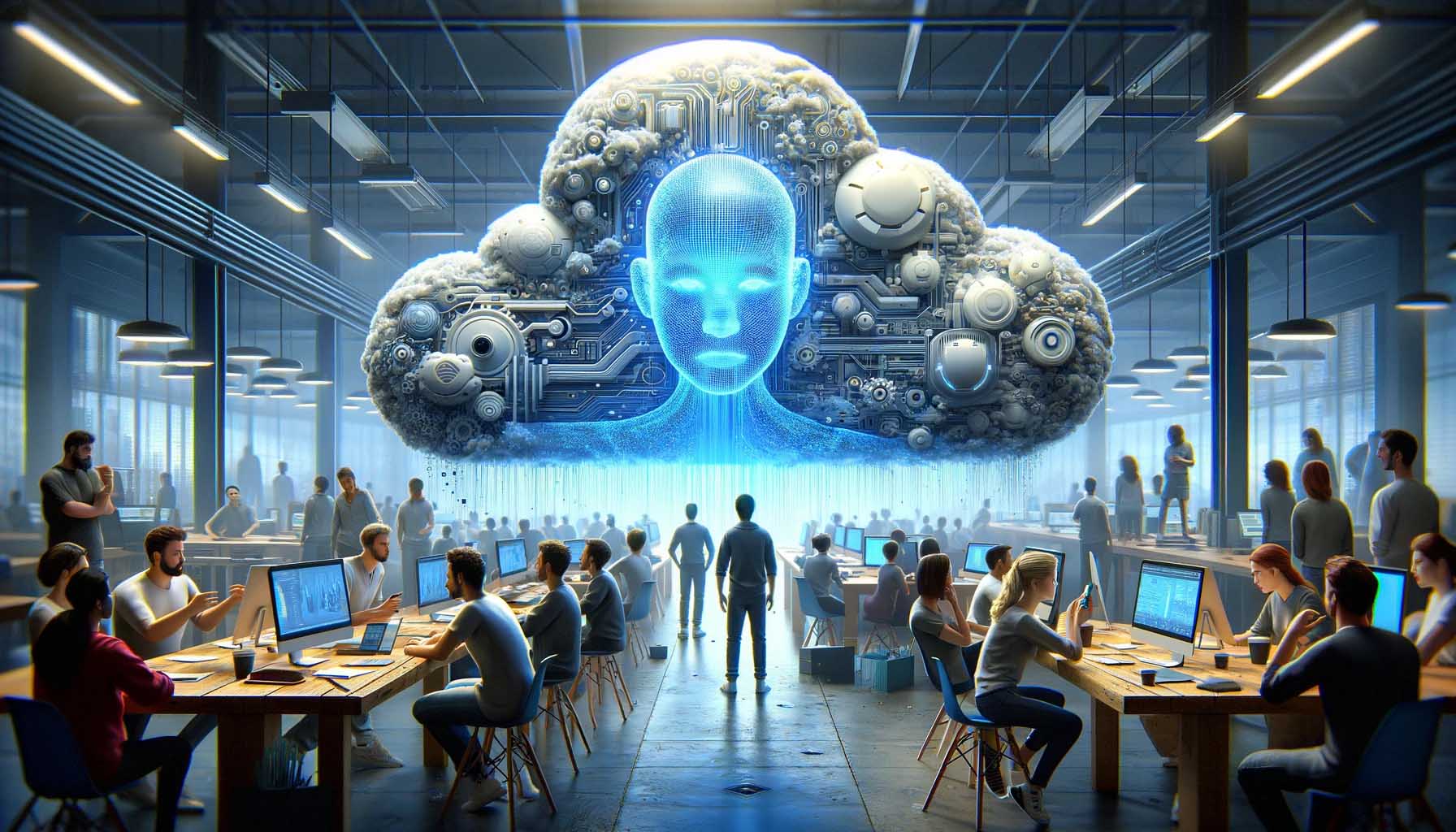
From the early days of artificial intelligence to the present, its evolution has been fascinating. Its ability to learn and perform tasks that were once exclusive to humans has led to innovative applications in fields ranging from medicine to finance. But how has artificial intelligence influenced the exciting world of 3D rendering?
Development – The Role of Artificial Intelligence in 3D Rendering
To understand how artificial intelligence has left its mark on 3D rendering, it is crucial to grasp the process of transforming three-dimensional data into two-dimensional images. This complex procedure involves simulating how light interacts with three-dimensional objects in a scene, reproducing visual effects such as shadows, reflections, and textures to generate a realistic visual representation.
Artificial intelligence intervenes using advanced algorithms, such as Convolutional Neural Networks (CNN), to analyze complex patterns in 3D data. These algorithms learn to interpret the geometry of the scene and apply visual effects efficiently, significantly improving the quality and efficiency of the rendering process. From optimizing lighting to autonomously generating textures, artificial intelligence plays a crucial role in transforming three-dimensional data into astonishingly detailed two-dimensional visual representations.
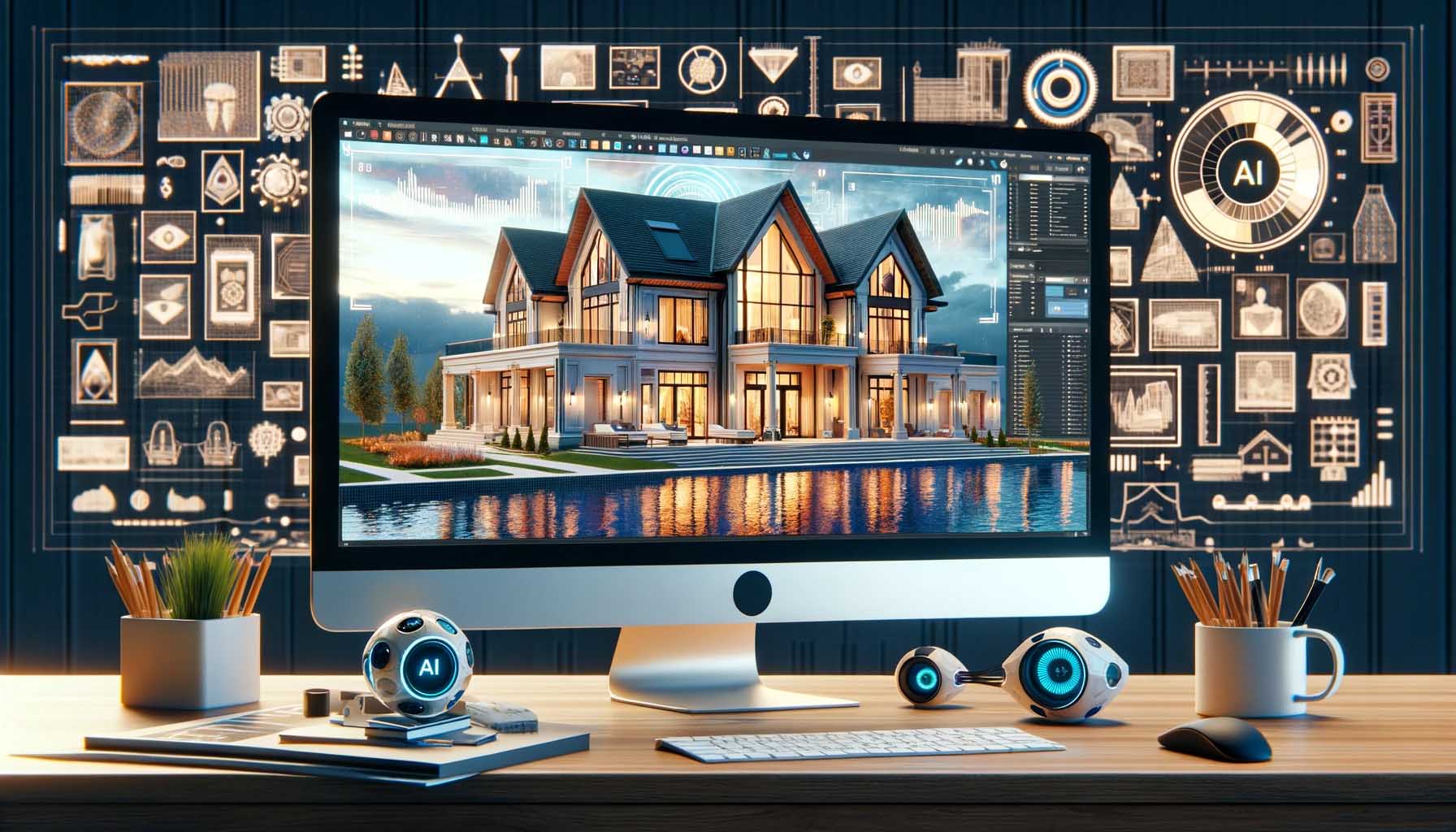
At the forefront of the revolution in three-dimensional representation are companies and platforms leading the integration of artificial intelligence into rendering engines. Among them, powerful tools and programs stand out, not only transforming the way we perceive digital space but also driving creativity and efficiency in visual production.
Blender:
- Features: Blender is a comprehensive 3D creation suite that includes modeling, animation, and rendering.
- AI Usage: While it doesn’t directly integrate artificial intelligence, the Blender community has developed plugins using machine learning techniques to enhance certain aspects of the creative process.
NVIDIA Omniverse:
- Features: Omniverse is a collaboration and real-time rendering platform developed by NVIDIA.
- AI Usage: It employs artificial intelligence to accelerate the rendering process, improve visual quality, and optimize workflows in 3D content production.
Autodesk Maya:
- Features: Maya is a 3D modeling and animation tool used in the film and gaming industry.
- AI Usage: Some users have integrated AI-based solutions to enhance rendering quality and optimize certain design aspects.
Unity and Unreal Engine:
- Features: Both are game engines also used to create interactive 3D environments and simulations.
- AI Usage: They can incorporate machine learning algorithms to enhance the artificial intelligence of virtual characters and optimize real-time lighting and rendering.
Adobe Dimension:
- Features: Dimension is an Adobe application designed specifically for 3D image creation.
- AI Usage: It offers realistic rendering functions that leverage advanced algorithms to simulate visual effects, such as lighting and shadows, to produce more convincing results.
Maxwell Render:
- Features: Maxwell Render is a rendering engine known for its focus on accurate light and material simulation.
- AI Usage: It can incorporate artificial intelligence to improve rendering quality and reduce noise in final images.
Artbreeder:
- Features: Artbreeder is an online platform that uses artificial intelligence to blend and generate images from multiple inputs.
- AI Usage: While not specifically designed for 3D rendering, it demonstrates how artificial intelligence can be creatively applied in visual content generation.
These tools, some used by our XpressRendering team, whether for rendering or creating 3D content, showcase how artificial intelligence is being integrated into various aspects of visual production to enhance efficiency and the quality of the final outcome.
Creative Synergy: AI and 3D Artists
The collaboration between artists and artificial intelligence systems has resulted in innovative visual works. Assistant tools like those mentioned above for 3D artists have simplified complex tasks, freeing creators to focus on artistic expression. Tasks such as Automatic Texture Generation, where algorithms can analyze patterns and automatically apply textures that fit the scene’s context, save time compared to manual adjustments.
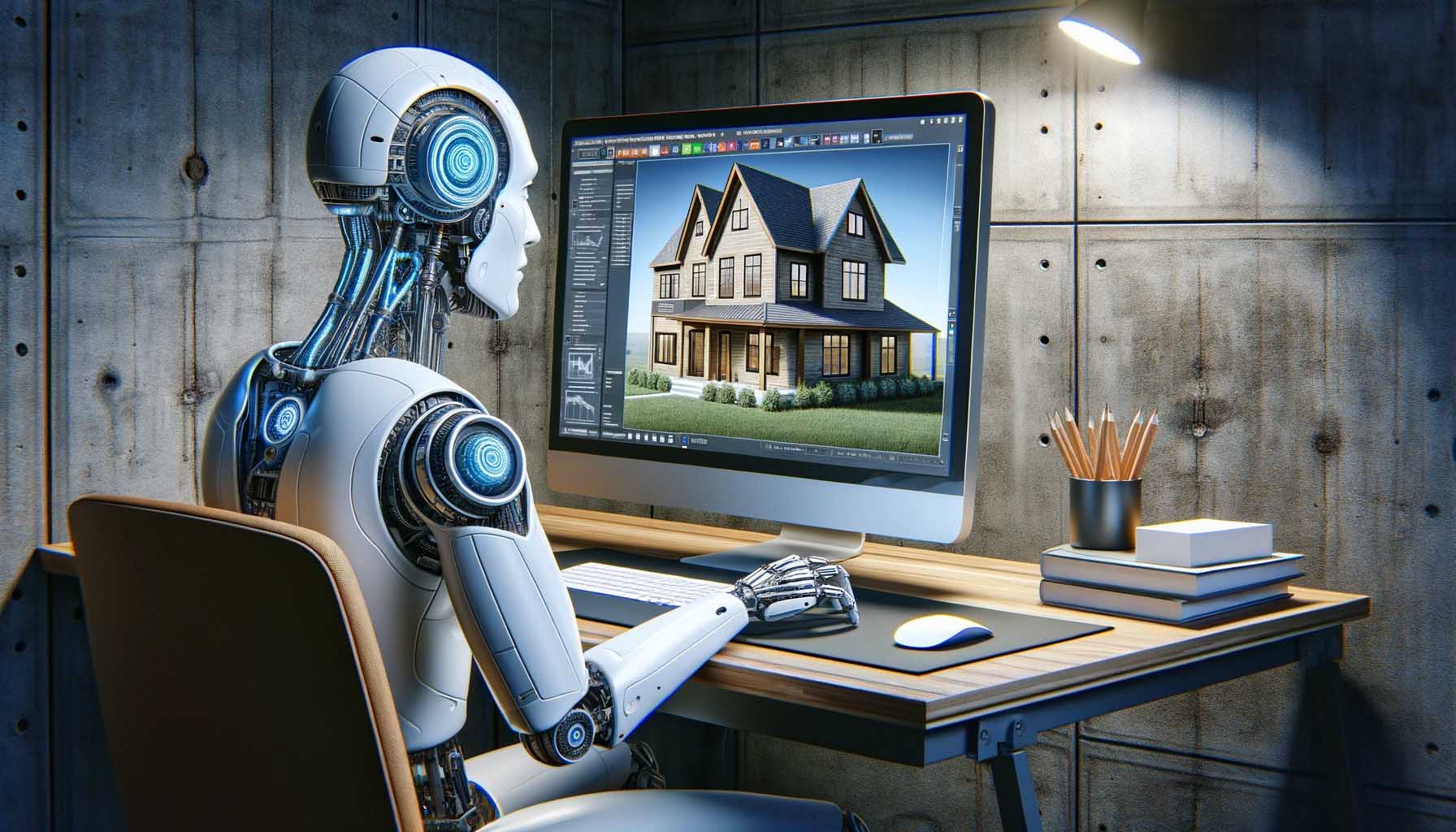
Lighting Optimization in a 3D scene, typically a delicate and time-consuming task, can be automated as AI algorithms analyze the scene’s geometry and adjust lighting automatically for optimal visual balance. Additionally, Noise Reduction in Images, where AI can identify and efficiently reduce noise, allows artists to obtain cleaner results without spending hours adjusting settings. Lastly, with AI-Assisted Animation, the creation of natural and realistic movements for characters can be simplified. Algorithms can learn from real human movements and apply this information to generate smoother and authentic animations.
Future of Artificial Intelligence in the 3D Rendering Industry
As we venture into the future, at XpressRendering, we believe that emerging trends at the intersection of artificial intelligence and 3D rendering promise to further transform how we interact with the digital world. One of the most exciting trends is the continuous improvement of machine learning algorithms, enabling faster and more realistic rendering. Generative models, fueled by artificial intelligence, also promise to boost creativity by automatically generating novel scenarios and visual elements.
Another key aspect of the future is the increased integration of artificial intelligence into generative design. Systems will be capable of understanding the designer’s intentions and collaborating more effectively, accelerating the creative process and allowing the exploration of more advanced concepts. Additionally, artificial intelligence will be more widely incorporated into pre-production and planning phases, helping anticipate potential challenges and optimize resources.
Virtual Reality (VR) and Augmented Reality (AR) will also play a crucial role in the future of artificial intelligence and 3D rendering. The ability to interact more immersively with rendered environments opens new possibilities in fields such as architecture, product design, and training.
Conclusion
In conclusion, the influence of artificial intelligence on 3D rendering has ushered in a new era of creativity and efficiency. At XpressRendering, we have witnessed this from process optimization to the creation of more impactful visual works; the synergy between these technologies has demonstrated its transformative power.
As we explore this exciting intersection of innovation, it is vital to reflect on the importance of balancing innovation with ethics and social responsibility. The future presents us with a blank canvas of possibilities. With increasingly sophisticated machine learning algorithms and the constant evolution of rendering tools, we can anticipate remarkable advances in 3D visualization. The creative collaboration between artificial intelligence and human artists will continue to shape innovative visual landscapes.
Ultimately, this journey into the future prompts an invitation for reflection. The convergence of artificial intelligence and 3D rendering not only redefines creativity but also raises fundamental questions about how we want our relationship with visual technology to evolve. In this space of endless possibilities, ethics and thoughtful consideration of social impact become essential guides to navigate the course of innovation toward a broader and sustainable horizon.
At XpressRendering, we encourage you to embrace the revolution of artificial intelligence, recognizing both its challenges and opportunities. We are committed to leading this path, exploring all the possibilities that AI has to offer while protecting and valuing the human touch that will always be at the core of our passion and success.
Follow us on LinkedIn, Facebook, and Instagram for the latest updates and portfolio highlights.
